Companion planting is a great gardening hack you can use in your garden to make the most your growing space, reduce pest pressure, increase yields, and lower disease incidents.
The key with being successful at companion planting? Making sure your “recipe” is correct by combining the right plants with each other to get your intended results. Celery is an easy crop to grow, and you can make it even easier by slotting it into your garden plan next to specific other varieties. Let’s get started!
Table of Contents
What is companion planting?
Companion planting is the practice of grouping plants together in the garden so they can benefit each other. Instead of the traditional practice of planting a full row or bed of celery, for example, you mix and match plants within the celery bed.
The plants you interplant with celery may serve different purposes—some will deter pests, some will enhance growth by increasing soil fertility, some with help preserve moisture and suppress weeds, some will make the best use of your space, and some will help prevent disease. With companion planting, you’re building a little plant support system within each bed.
Why should I try companion planting?
If you’re interested in organic, sustainable gardening, companion planting is the place to start. It can reduce pests, improve flavor, and increase production—and it is so EASY. Just put certain plants together and let the magic happen!
What are the BEST celery companion plants?
Our favorite companion plants for celery focus mostly on repelling pests (both insects like aphids and large animal pests like rabbits and deer). Here are the ones we’ve had the best success with.
- Marigolds. The strong scent of marigolds repels pests from celery. They can also serve as trap crops for the slugs that can infest celery.
- Chamomile. It’s thought that when interplanted, chamomile can improve the flavor of celery.
- Mint. Mint will deter both insects and larger animals, such as rabbits or deer, that want to eat your celery. Mint can be invasive, so we recommend planting it in a pot to contain the herb.
- Nasturtiums. Similar to marigolds, nasturtiums’ strong scent repels pests that want to munch on your celery, such as flea beetles.
- Thyme, basil, dill, sage, oregano, rosemary, bee balm. The strong scent of these herbs repels pests that can infest celery.
- Cosmos. These tall beautiful flowers do a great job of attracting parasitic wasps that are a natural predator of many of the pests that impact celery.
Growfully Protip
Thanks to its strong scent and beautiful flowers that attract pollinators, marigold is a wonderful universal companion plant to sprinkle throughout your garden!
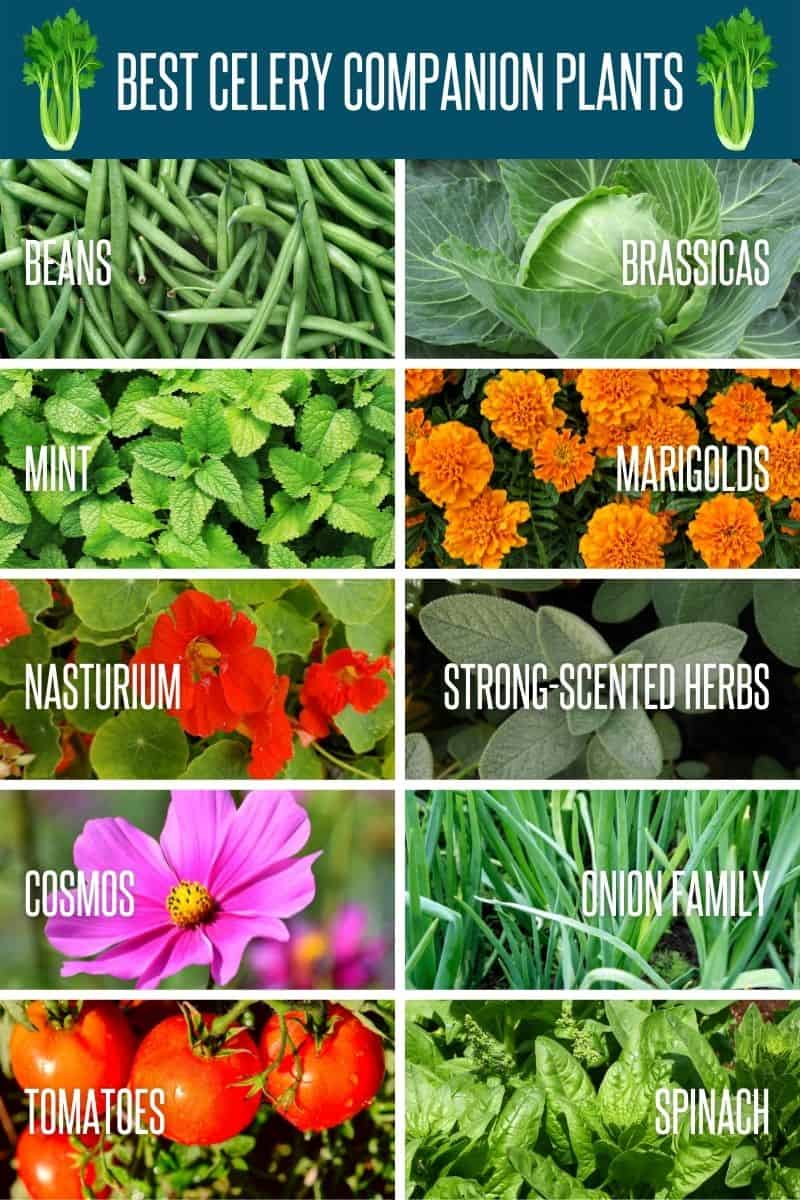
What are some other good companion plants for celery?
There are a number of vegetables that grow just fine with celery in the garden. Here are some other plants that will happily coexist with celery.
- Bush and pole beans. Celery can help repel bean beetles from bush beans and pole beans. And beans and peas fix nitrogen to the soil, giving heavy-feeding celery more nutrients.
- Cabbage, cauliflower, broccoli, and Brussels sprouts. Celery repels pests that like to attack brassicas, such as white cabbage moths. This also includes radishes, kohlrabi, and kale. The larger brassicas can work to shade the young celery shoots from the sun.
- Onions, leeks, shallots, garlic, chives, and other alliums. The strong scent of plants in the onion family repels bugs that want to munch on celery. It’s also thought that interplanting celery and alliums improve the flavor of celery.
- Spinach. Celery discourages pests that enjoy feasting on spinach. Spinach and celery also require similar nutrient levels, sunlight, and moisture levels, making their growing conditions similar.
- Tomatoes. Tomato-loving pests are discouraged by celery.
- Cucumbers. Nestle a few celery plants among your cucumber vines—the large sprawling vines of the cukes will help shade the celery from the intense summer sun, and the celery helps fight off whiteflies in your cucumbers. The sprawling leaves of a cucumber plant can also work as a natural mulch to prevent weeds from growing around your celery.
Growfully Protip
If you’re looking to reduce insect infestation for the long haul, a great strategy is to increase your beneficial insects population by planting many pollinator-friendly varieties like daisies, snapdragons, sunflowers, and other flowers. These varieties will help attract natural predators, like parasitic wasps, that will help keep your pest problem under control.
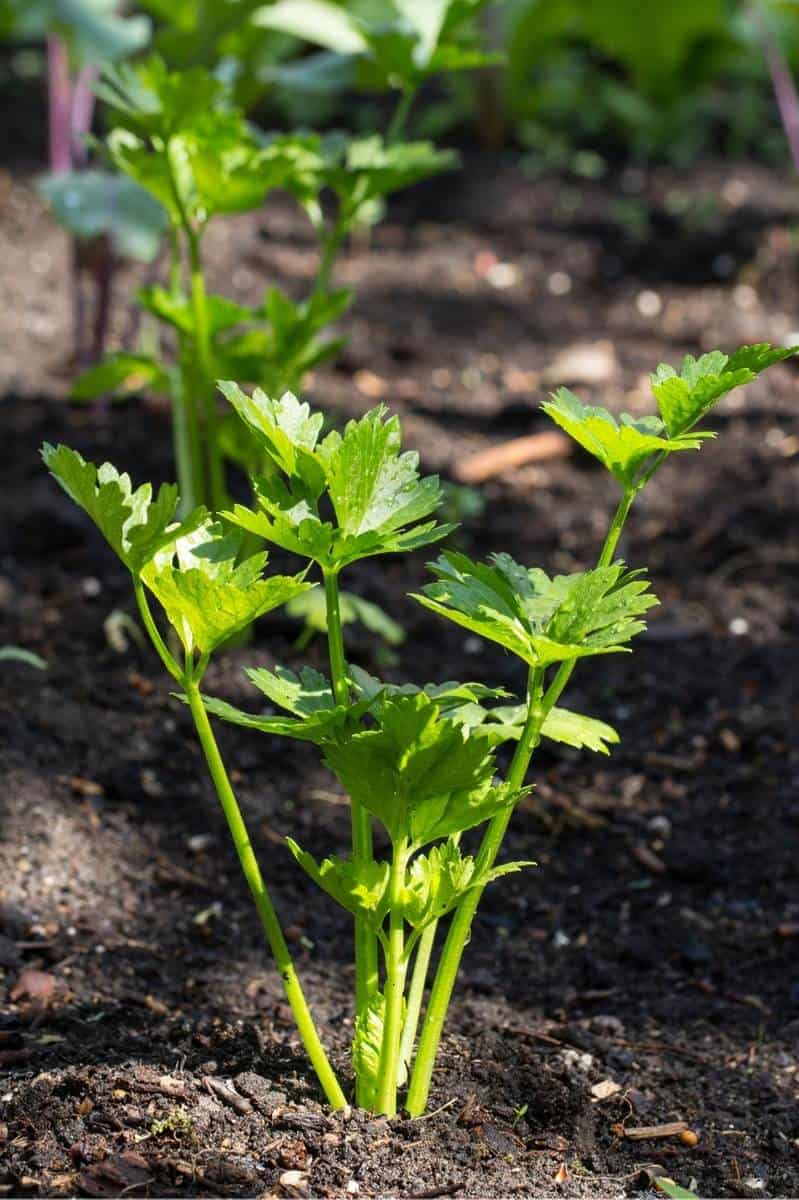
What are bad companion plants for celery?
Not everything is a good friend to celery in the garden. Here’s what we recommend keeping away from your celery plants:
- Carrots, parsnips, and turnips—Not only are these part of the same family as celery, which makes them prone to the same pest issues, but they also can easily disturb the shallow roots of celery during harvest.
- Parsley and cilantro—These two are also part of the same family as celery, and while their high scent tends to make them less problematic (and some even say cilantro works as a good companion plant to celery), we try to keep them apart in our garden.
- Corn—Corn is a super heavy-feeder that can zap nutrients that celery needs. And while a little shade is good, too much shade from tall corn could inhibit growth in the celery.
- Turnips, rutabaga, and other root veggies—This is the same harvesting issue from above. Celery have shallow, easily-disturbed roots. You don’t want to be pulling root crops from around your celery.
- Potatoes—This one is just a case of poor timing. You’ll be harvesting your potatoes right around the time your celery is in full growth, which means you’ll need to dig up your celery when you dig your potatoes.

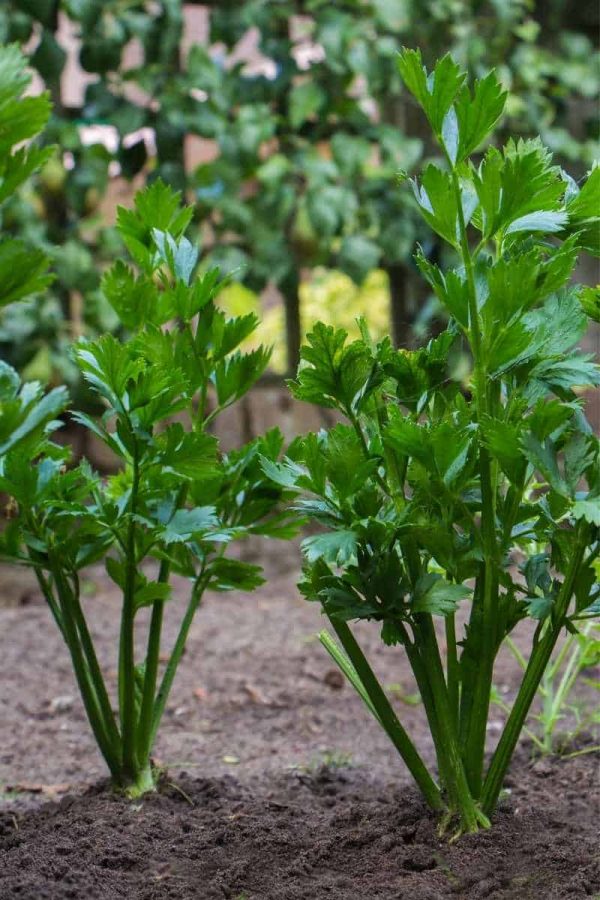
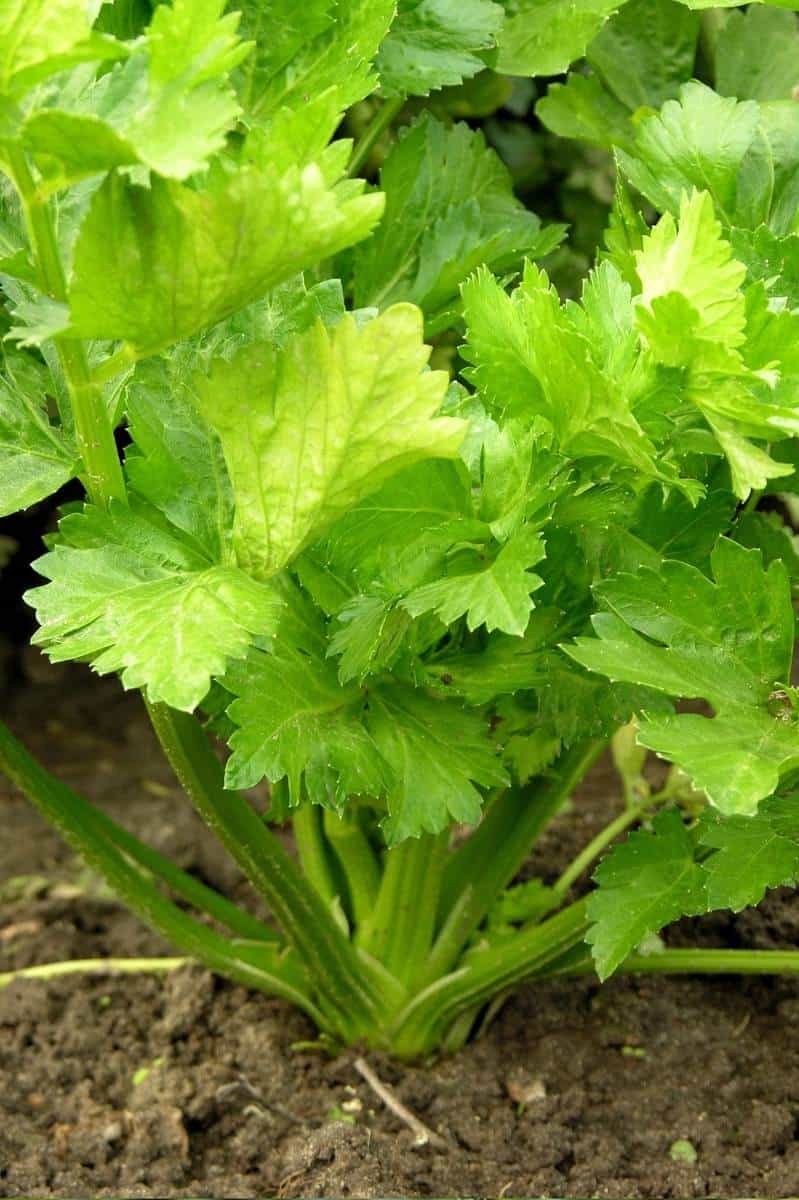
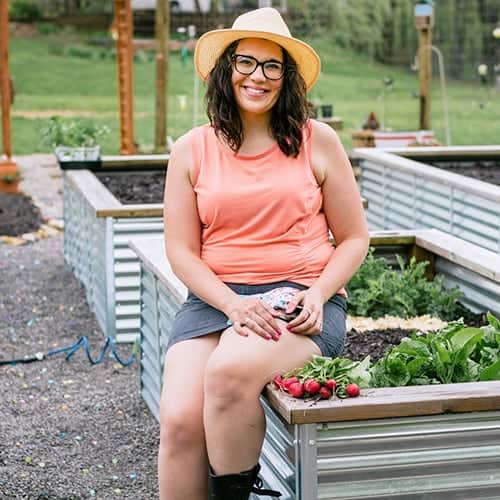
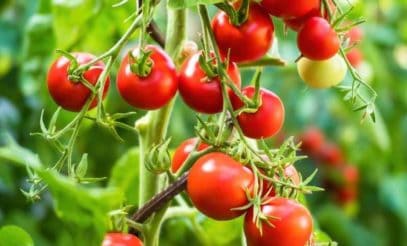

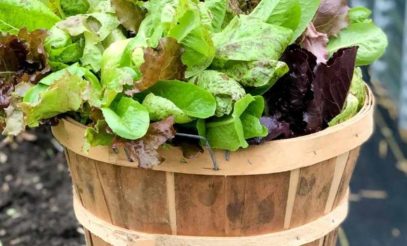
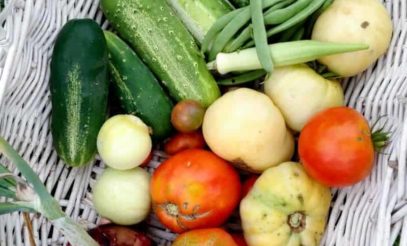
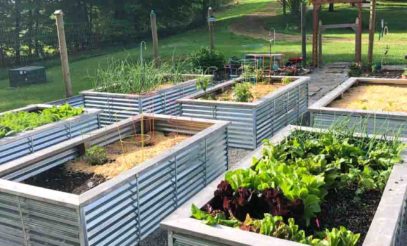
Thank you, nice post.
I hope you can help me. I live in zone 9 and planted onion plants on September 18th, 2021 and they are growing like crazy. We have had a false Spring the the last month. I’m sure it speeded up our Red Onions. Every thing is blooming now and I wanted to know when my onions will mature. I don’t know what weather we are going to have in March or April. Do I have to do something for the Onions to make sure they mature at the right time.
Appreciate any help for suggestions you might have.
Billie
Onions mature based on day length—not the weather outside. So the answer to this will depend on what type of onions you planted (long day, short day, day neutral). But basically, they won’t start bulbing until the day is long enough based on the variety you planted.